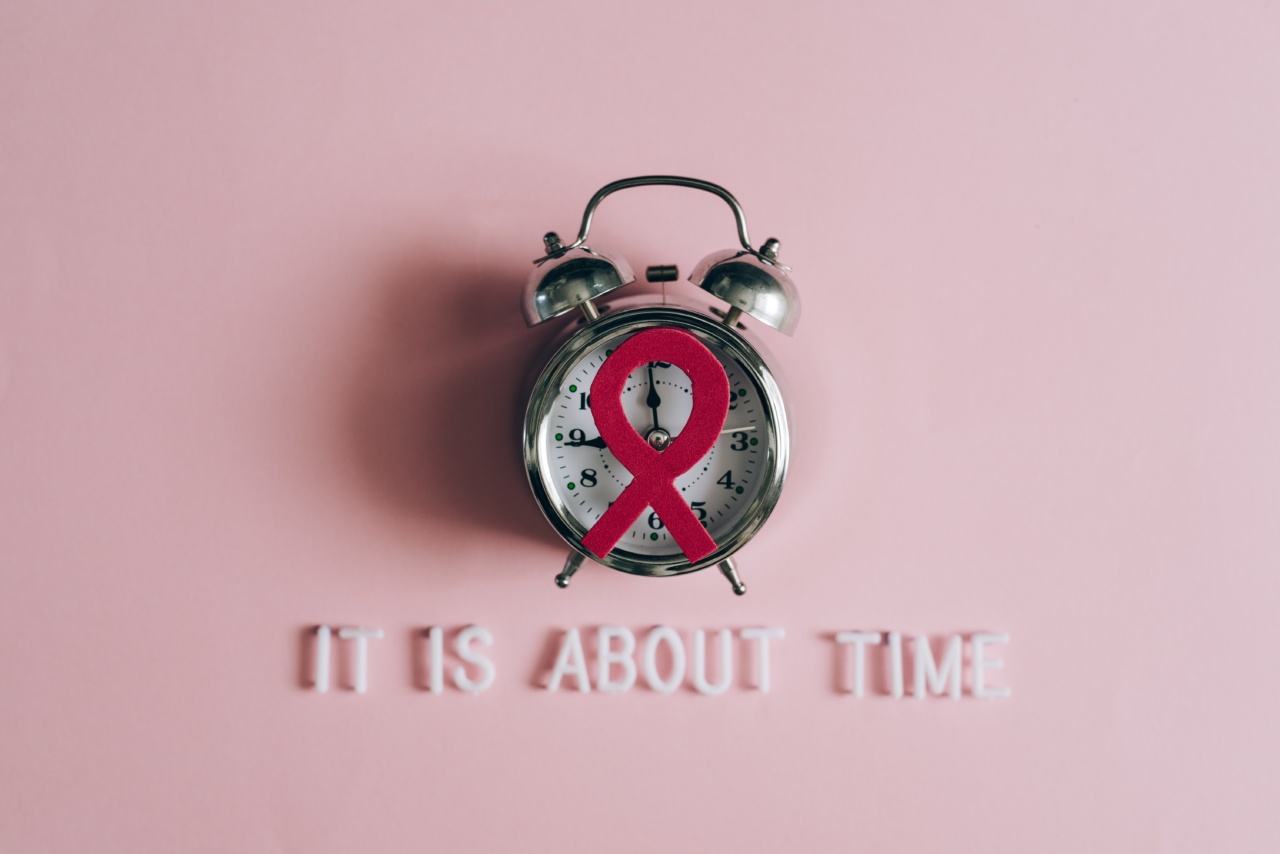HIV (Human Immunodeficiency Virus) has been a global health crisis for several decades, with millions of lives affected and lost. Despite significant advancements in treatment and prevention, HIV suppression remains a critical challenge.
This article will explore the crucial aspects of HIV suppression, including its importance, current strategies, and the race against time to achieve effective results.
The Importance of HIV Suppression
HIV suppression refers to the reduction of HIV viral load to undetectable levels in an infected individual’s blood. Achieving and maintaining viral suppression is vital for several reasons:.
1. Health Benefits
When the viral load is effectively suppressed, the immune system of people living with HIV remains stronger, helping them stay healthy and live longer.
By reducing viral replication, antiretroviral therapy (ART) prevents the virus from damaging the immune system and developing into acquired immunodeficiency syndrome (AIDS).
2. Prevention of Transmission
HIV is primarily transmitted through blood, semen, vaginal fluids, and breast milk. Individuals with suppressed viral loads have a significantly lower risk of transmitting HIV to their sexual partners or through other modes of transmission.
This concept, known as “Undetectable = Untransmittable” (U=U), highlights the role of HIV suppression in the prevention efforts.
3. Break the Chain
Wide-scale HIV suppression can help break the transmission chain, effectively reducing the overall number of new infections.
When a significant proportion of the population achieves viral suppression, the likelihood of HIV transmission decreases, contributing to the control and eventual eradication of the virus.
Current Strategies for HIV Suppression
Over the years, various strategies and interventions have been developed to promote HIV suppression. These include:.
1. Early Diagnosis
Early detection is crucial in initiating timely treatment. Regular HIV testing allows for early diagnosis, enabling individuals to start ART promptly.
The sooner treatment begins, the better the outcomes in terms of viral suppression and disease progression.
2. Antiretroviral Therapy (ART)
ART involves the use of a combination of antiretroviral drugs to suppress viral replication, protect the immune system, and reduce the risk of transmission. Strict adherence to the prescribed ART regimen is essential for successful viral suppression.
3. Treatment as Prevention (TasP)
TasP is an approach that emphasizes the use of HIV treatment to prevent new infections.
By initiating and maintaining effective ART, individuals living with HIV can potentially reduce their viral load to undetectable levels, rendering them non-infectious.
4. Pre-Exposure Prophylaxis (PrEP)
PrEP involves the use of antiretroviral drugs by individuals who are at high risk of contracting HIV. When taken as prescribed, PrEP significantly reduces the chances of acquiring HIV, further contributing to the overall suppression efforts.
5. Adherence Support
Ensuring high adherence to ART is key to achieving and maintaining viral suppression.
Adherence support programs, such as counseling, reminders, and simplified treatment regimens, play a crucial role in helping individuals stick to their prescribed medications.
The Race Against Time
While significant progress has been made in HIV suppression, several challenges persist, making the fight against the virus a race against time:.
1. Stigma and Discrimination
The stigma associated with HIV remains a significant barrier to effective suppression efforts.
Fear of discrimination often prevents individuals from seeking testing, treatment, and support, hindering progress in achieving viral suppression on a broader scale.
2. Limited Access to Testing and Treatment
In many parts of the world, access to HIV testing and treatment services is limited. This lack of accessibility prevents individuals from receiving timely diagnosis and initiation of treatment, leading to lower rates of viral suppression.
3. Treatment Fatigue and Disengagement
Long-term adherence to ART can be challenging for some individuals. Treatment fatigue, side effects, and complex regimens can contribute to disengagement from care, resulting in suboptimal viral suppression and increased risk of disease progression.
4. Health Inequalities
Health inequalities, including socioeconomic disparities and limited healthcare resources, disproportionately affect marginalized populations. These disparities often lead to lower rates of viral suppression among vulnerable communities.
5. Persistent HIV Reservoirs
The nature of HIV allows the virus to establish reservoirs in the body, where it remains dormant and inaccessible to antiretroviral drugs.
As a result, complete eradication of the virus becomes challenging, requiring continued efforts in research and development for novel treatment approaches.
Conclusion
HIV suppression is a critical component in reducing the burden of HIV globally.
Achieving and maintaining viral suppression not only benefits the health of individuals living with HIV but also plays a crucial role in preventing transmission and breaking the chain of new infections.
With the implementation of effective strategies, early diagnosis, widespread access to treatment, and the removal of barriers such as stigma and discrimination, we can overcome the challenges and race against the clock to effectively suppress HIV worldwide.






























